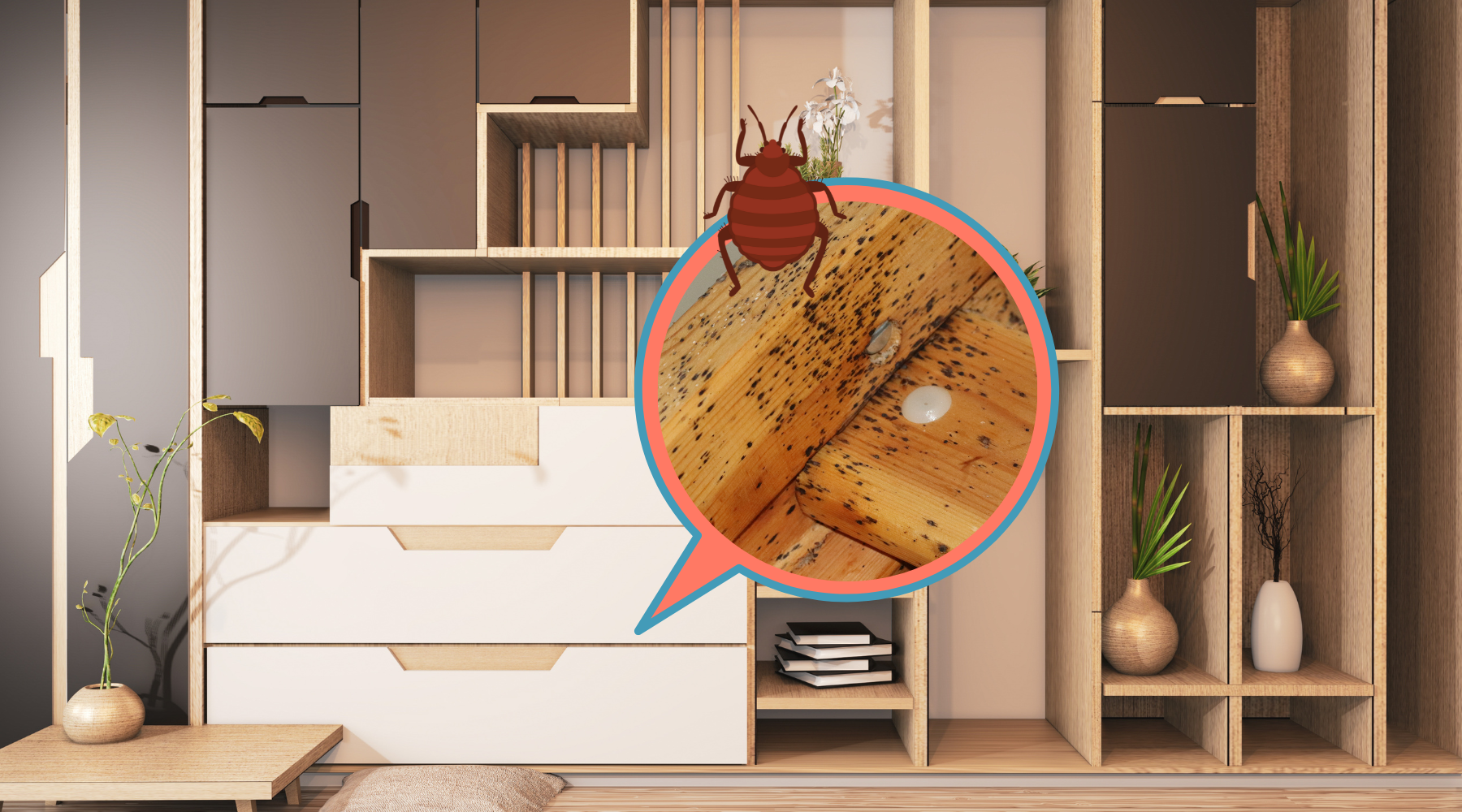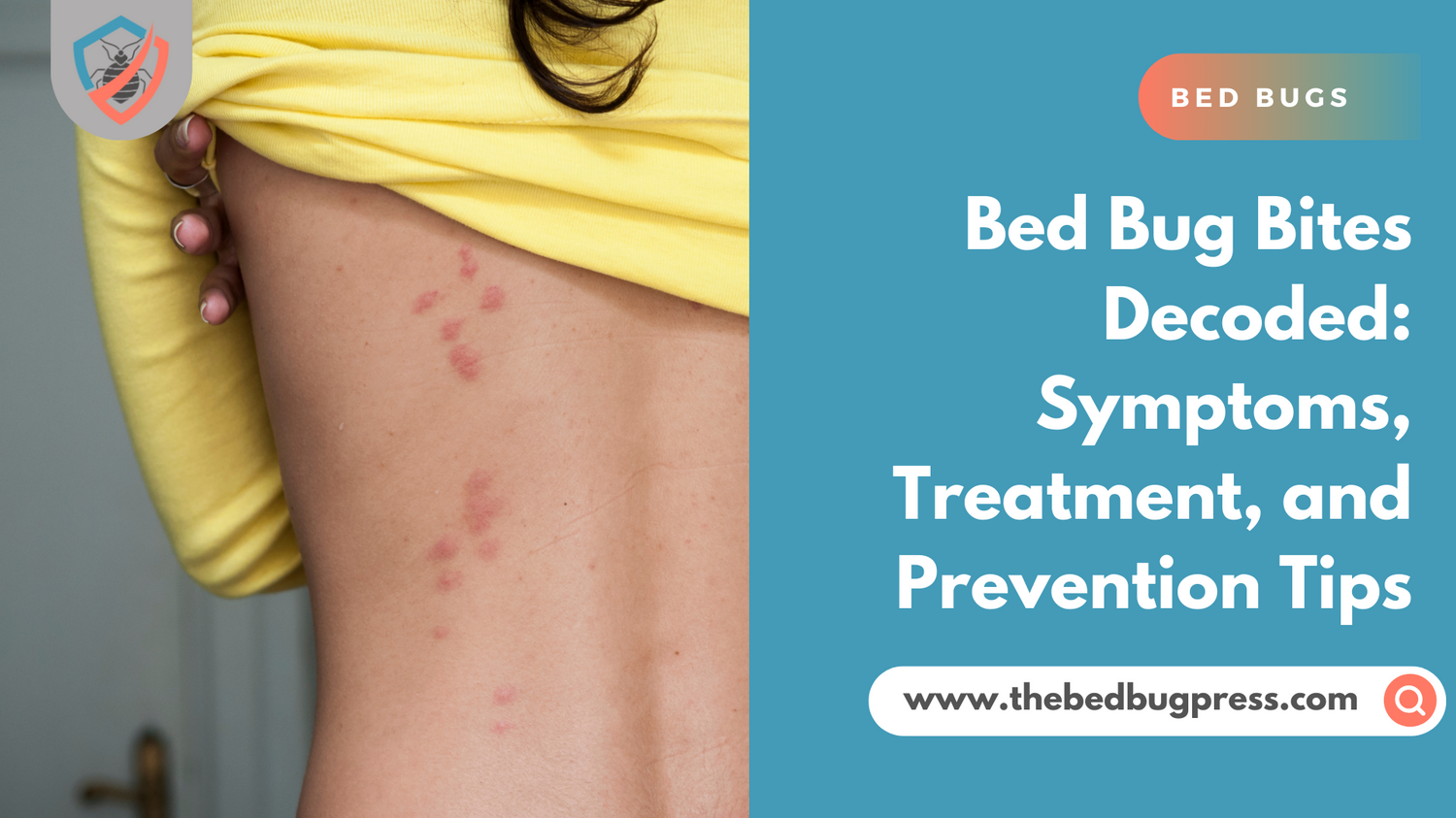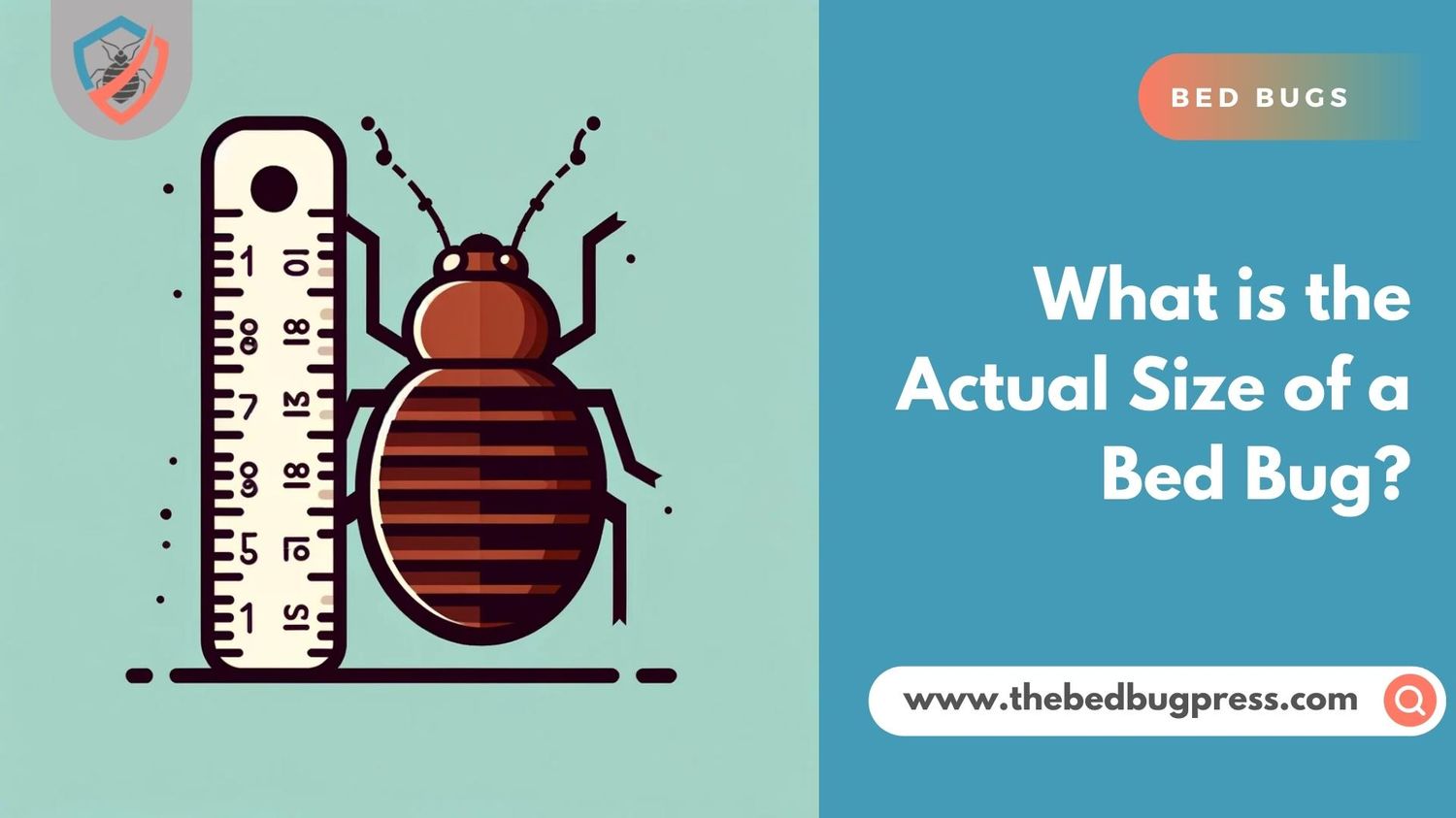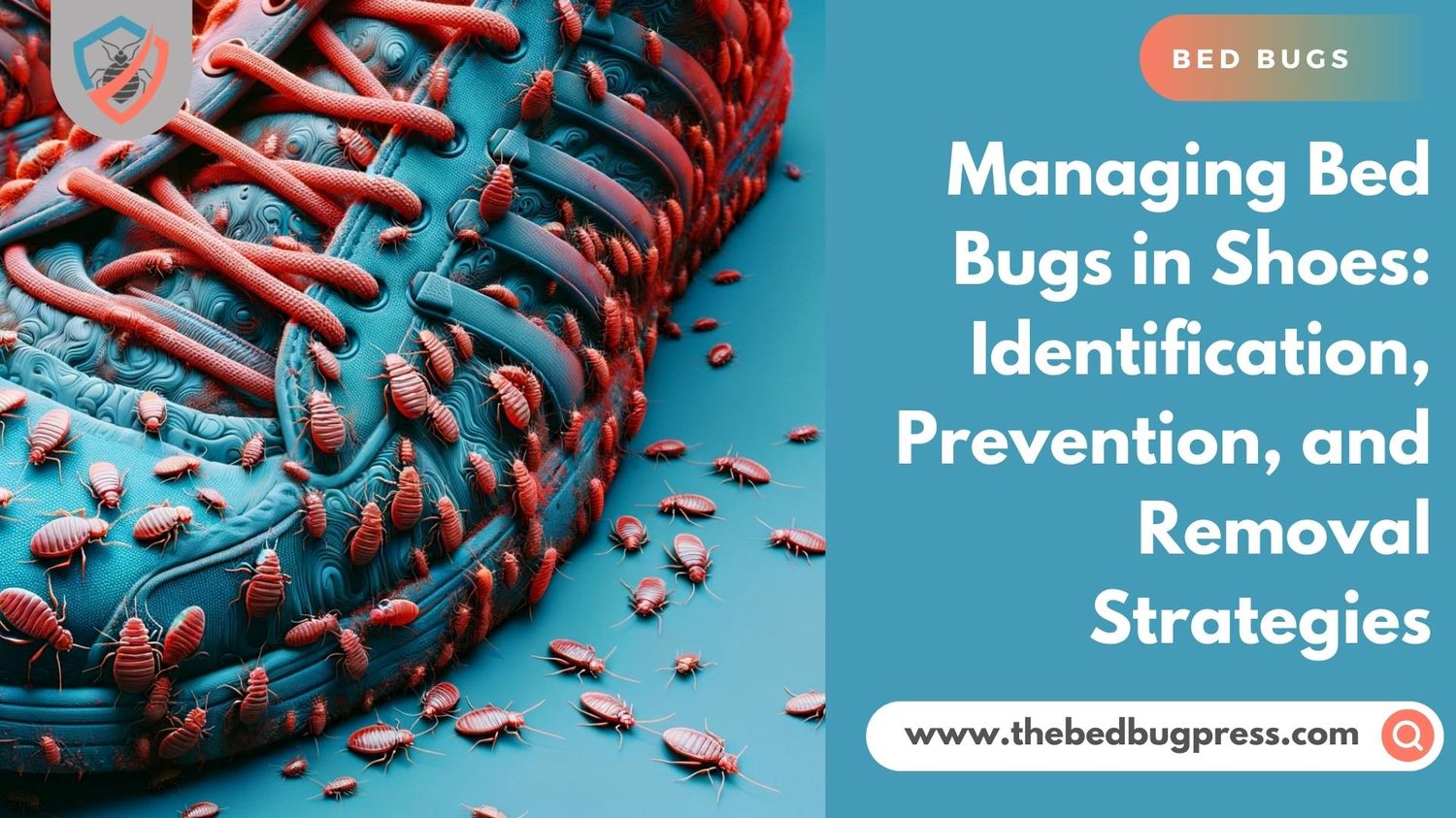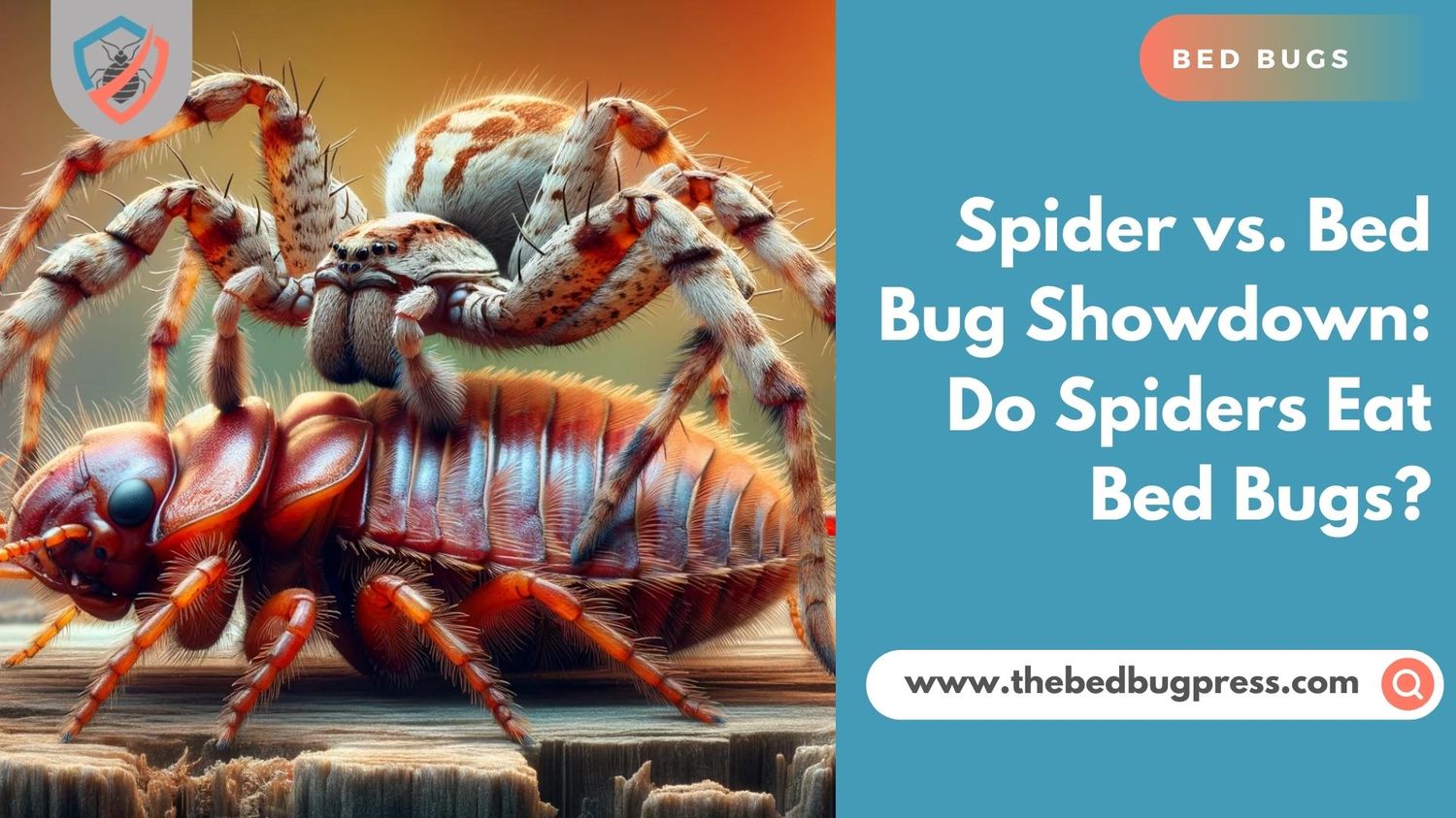Navigating the unwelcome territory of a bed bug infestation can prove to be a challenging and exasperating ordeal. Yet, arming yourself with knowledge and understanding the essential steps to tackle the issue head-on can make all the difference.
Among the telltale signs that bed bugs have made themselves at home on your property is the presence of their feces. You might find yourself wondering about the texture of bed bug droppings—is bed bug feces hard or soft? Rest assured, we shall explore this topic in-depth, equipping you with the ability to recognize the visual characteristics of bed bug droppings and the appropriate methods to effectively sanitize the affected areas.
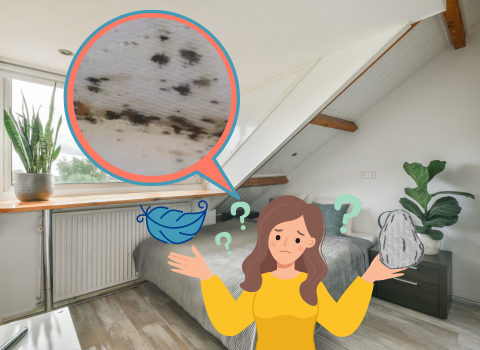
What Does Bed Bug Poop Look Like?
Unraveling the truth about a potential bed bug infestation demands a meticulous examination of your surroundings. Among the vital clues to uncover, the identification of bed bug droppings reigns supreme. Yet, the task of differentiating bed bug feces from the excrement of other insects can prove to be quite a perplexing endeavor.
The appearance of bed bug feces may undergo variations contingent upon the surfaces they grace—be it sheets, mattresses, pillows, wood, or even walls, unexpected realms where the traces of bed bug droppings may await discovery.
What Does Bed Bug Poop on Sheets?
Detecting bed bug feces on sheets can be crucial in identifying an infestation. These feces often manifest as small, dark stains resembling ink spots. They tend to concentrate along the seams, corners, and edges of bed sheets, and may also be present on pillowcases and bedspreads. The color of bed bug droppings typically ranges from black to a dark rusty brown color, and they can be either dry and flaky or slightly wet and smudged.
It is important to note that bed bug droppings are just one indication of a bed bug infestation, and they can be difficult to spot. If you suspect the presence of a bed bug problem or bugs in your home, it is essential to thoroughly inspect your sheets. In addition to looking for bed bug droppings, keep an eye out for live bugs, shed skins, fresh bloodstains, and any unusual odors that may be present.
What Does Bed Bug Poop on Mattress?
Bed bug droppings look like small, dark stains on a mattress. These are similar in appearance to that on sheets and are often found along the seams and corners of the mattress. If your mattress has a light color, the bed bug droppings stains can be more obvious.
Since bed bugs are attracted to carbon dioxide and warmth while humans are sleeping, they will likely reside in your bedding and mattresses.
If you discover bed bug fecal stains on your mattress, you should act promptly to prevent the infestation from spreading. Vacuuming black stain up and steam-cleaning the entire bed frame and mattress itself can help to kill any bugs or eggs that may be present, and using a bed bug mattress encasement can prevent any remaining bugs from escaping or biting.
What Does Bed Bug Poop on Pillows?
Bed bug fecal stains on pillows can be similar in appearance to those on sheets and mattresses – small, dark stains that are often found in tiny spots along the seams and corners. However, because pillows are often moved around more frequently than mattresses or bedding, the fecal stains may be more spread out or less concentrated.
In addition to bed bug droppings, you may also find live bed bugs, shed skins, and bloodstains on your pillows if you have an infestation. Bed bugs tend to stay in areas where people sleep, so pillows are a common target for these pests.
If you find bed bugs poop or you find that bed bugs leave any other bed bug stains or droppings on your pillows, you must act immediately. Wash your pillows on high heat with strong cleaning solutions, stain remover, or hydrogen peroxide to get rid of the stubborn stains.
You should use a bed bug-proof pillow cover to kill bed bugs or bed bug eggs that may be present, while vacuuming and steam-cleaning your bedding and furniture can help to remove any remaining debris that bed bugs leave behind
What Does Bed Bug Poop on Wood?
Bed bug droppings look similar on wood surfaces and on fabric surfaces – small, dark brown stains that resemble ink stains. You may find that bed bug poop look like these black ink stains on mattress seams and also on wooden bed frames, headboards, and other furniture, as well as on baseboards, floors, and walls near the infestation.
Aside from the sleeping areas, they are often found in or around wooden furniture and structures near the sleeping areas. Aside from bed bug poop stains, you may also find live bed bugs, shed skin, and bloodstains on these surfaces if you have an infestation.
In addition to vacuuming and steam-cleaning the affected to get rid of adult bed bugs, their eggs, and nymphs that may be present, you can also use a bed bug spray or powder on the surfaces.
What Does Bed Bug Poop on Walls?
Bed bug poop stains on walls can be very small ink stains similar in appearance to those on other surfaces – small, dark brown stains that resemble ink spots. You may find bed bug feces stains on walls near the bed frame or other furniture and on baseboards, electrical outlets, and other fixtures.
Because bed bugs are attracted to areas where people sleep, they may climb up walls and other surfaces in search of their next meal. In addition to poop, you may also find live bed bugs, shed skins, and bloodstains on these surfaces if you have an infestation.
By understanding what bed bug poop looks like on different surfaces, you can better identify bed bug feces, bed bugs eggs, adult bed bugs, and address the issue in a timely and effective manner.
Keep in mind that many bed bugs themselves can be difficult to eliminate, so resorting to DIY treatments may not be effective in every case. A professional pest control company can provide more powerful and targeted treatments that can help to eliminate bed bugs at all stages of their life cycle.
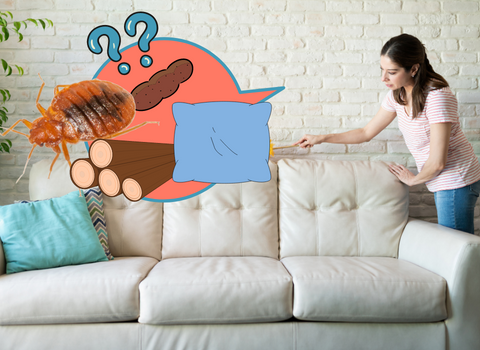
Identifying Bed Bug Poop
One of the signs of a bed bug infestation is spotting bed bug poop everywhere, which can be found on a variety of surfaces. Identifying bed bug droppings is important to act and prevent the infestation from getting worse. Below is more information on how to properly identify bed bug droppings:
Bed Bug Poop Size
Bed bug droppings size can vary, but it is typically small and about the size of a period at the end of a sentence. The exact size can depend on the size of the bed bug, as well as how recently it has fed. Fresh bed bug droppings may be moister and larger than older poop.
Bed Bug Poop Shape
Bed bug poop shape is typically cylindrical or oval, with tapered ends. The exact shape can depend on how recently the bed bug has fed, as well as other factors such as the age of the bug and its sex. Generally, bed bug droppings are digested blood that has a smooth surface and may be slightly curved or twisted.
Bed Bug Poop Color
The color of bed bug droppings is typically dark, brownish rust color, or black, although it can also appear reddish-brown if the bed bug has recently fed on fresh blood. The exact color can depend on factors such as the age and diet of the bed bug, as well as the surface on which the poop is found.
Bed Bug Poop Smell
Bed bug droppings themselves do not typically have a strong odor, although the infestation can produce a musty, unpleasant, and distinctive rusty smell. This odor is caused by the bed bug poo smell and bugs themselves, as well as the oils and secretions they produce. Bed bug infestations usually create a musty or unpleasant odor, so this may confirm their presence in your home if you notice this unusual smell.
Are Bed Bugs Attracted to Their Own Fecal Matter
Aside from being attracted to the carbon dioxide that humans exhale and the heat that human bodies emit, bed bugs are also attracted to their own fecal matter. Bed bugs produce dark, rust-colored fecal spots that are often found on surfaces where they hide, such as on mattresses, box spring frames, bed frames, and walls. These spots are made up of partially digested blood, and they emit a pheromone that attracts other bed bugs.
Bed bugs use pheromones as a means of communication, and the pheromones in their fecal matter signal to other bed bugs that a food source is nearby. When a bed bug detects the pheromones, it may follow the trail to the source of the fecal matter and then to a potential food source, such as a human host.
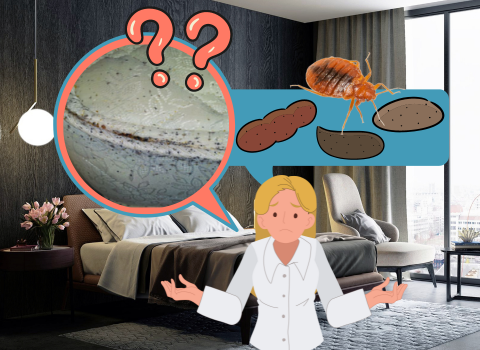
Is Bed Bug Fecal Matter Harmful to Humans?
While bed bug fecal matter is not directly harmful to humans, it can be a sign of a bed bug infestation, which can cause several problems.
Typically bed bugs eat blood and would bite humans while they sleep. Bed bug bites can be itchy and uncomfortable, and in some cases, they can lead to an allergic reaction. Additionally, the stress of dealing with a bed bug infestation can be emotionally taxing, and it can interfere with sleep and overall well-being.
In terms of health concerns, bed bug fecal matter can sometimes trigger allergies or asthma symptoms in sensitive individuals. If bed bug fecal matter accumulates in large amounts, it can also create an unpleasant odor and may be a breeding ground for bacteria.
Is Bed Bug Poop a Sign of Bed Bug Infestation?
Yes, bed bug feces or fecal matter is a sign of bed bug infestation. Bed bugs feed on blood and their waste products, including fecal matter, are left behind on surfaces where they have been feeding or resting. Bed bug fecal matter or poop is typically small, dark, and cylindrical, like a small black seed or grain of pepper.
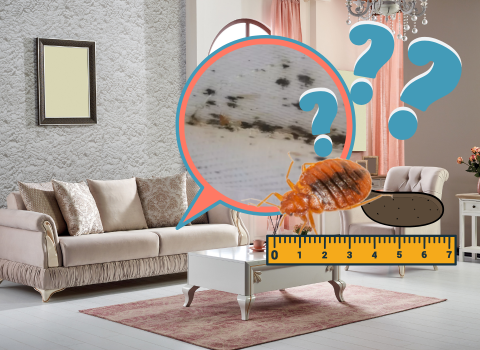
Common Places Where Bed Bug Poop is Found
Bed bugs are known for leaving behind telltale signs of their presence, including small dark spots on surfaces where they have been feeding or resting. These spots are bed bug fecal matter, and they can be found in a variety of locations throughout a home or other building.
Mattresses and box springs
Sheets and pillowcases
Upholstered furniture, such as sofas and chairs
Curtains and drapes
Carpet and rugs
Walls and baseboards
Electrical outlets and light switches
These are just a few of the most common places where may find bed bugs roaming as well as where bug poop may be found. Bed bugs are skilled at hiding in small cracks and crevices, so it is important to thoroughly inspect all surfaces and areas where they may be present.
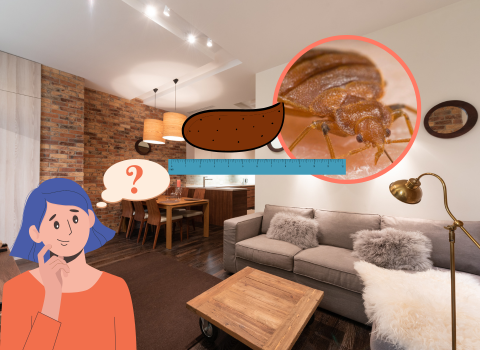
How to Clean Up Spots or Smears of Bed Bug Poop
After identifying bed bug feces and finding bed bug fecal stains or droppings in your home , you should start acting quickly to prevent the infestation from getting worse. Cleaning up spots or smears of bed bug fecal matter is an important step in the process of eliminating bed bugs from your home.
Wear gloves and protective clothing to prevent contact with bed bugs or bed bug feces.
Use a disposable cloth or paper towel to gently blot the affected area, being careful not to spread the bed bug droppings to other surfaces.
Once the bulk of the bed bug feces has been removed, use a damp cloth or sponge to clean the area thoroughly with soap and water.
Use a disinfectant cleaner to further sanitize the area and kill any remaining bed bugs or eggs.
Vacuum the bed frame surrounding area, including any nearby carpets, upholstery, or other surfaces where bed bugs may be present.
Dispose of any cleaning materials, gloves, or other protective gear in a sealed plastic bag to prevent further contamination.
Cleaning up bed bug droppings is an important step in the process of eliminating bed bugs from your home. While it may be unsettling to discover bed bug fecal matter, taking prompt action to clean it up and sanitize the area can help prevent the infestation from getting worse.
If you are unsure how to proceed, it may be helpful to contact a professional pest control company for guidance on how to properly clean up bed bug feces wipe and treat affected areas.

